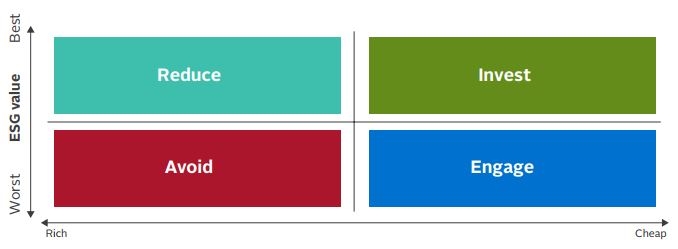
Engagement from fixed income investors with bond issuers remains relatively uncommon, according to the PRI, but a series of studies launched last week shows it can deliver benefits for both sides, with Pimco highlighting the particular relevance of ESG analyses when investing in banks.
The Principles for Responsible Investment (PRI) on Thursday launched a series of seven case studies on fixed income engagement, produced in collaboration with PRI signatories.
The PRI noted that while institutional investors are increasingly engaging with companies to discover and in some cases influence their approach to ESG issues, such engagement remains less common among fixed income investors, whose legal rights are limited.
However, speaking in a webinar held to launch the case study series on Thursday, Anna Georgieva, manager, public markets, PRI said that – although debt investors have a different relationship to issuers than that of equity investors, with a varying degree of influence – both shareholders and bondholders can exert influence, as both are a permanent part of an issuer’s capital structure.
The series covers engagement with a range of different profiles of issuer, and includes a case study authored by Niamh Whooley, senior vice president, ESG, Pimco, on engagement with utilities and global bank issuers.
She said an analysis of ESG factors is particularly relevant in the banking sector because the confidence of a bank’s depositors and borrowers largely drives its valuation. When Pimco considers investing in a bank, she said, it seeks to assess if they effectively manage their organisational culture and conduct, including people and product controls – with the latter ranging from product suitability to the integration of ESG factors into their underwriting.
“For example, we recently engaged with a co-operative bank that we viewed as potentially higher risk because, as a non-listed mutual group, it is not subject to the corporate governance code of its home market,” said Whooley. “However, we found that the bank has fully committed to complying with best practice.
“Through these discussions, we established that it has a robust product safety review process, while consumer sales staff do not have aggressive sales targets and their performance assessments include customer satisfaction and good customer outcomes.”
ESG relative valuation

Source: Pimco; Note: for illustrative purposes only
According to 2017 PRI signatory reporting data, 66% of signatories with fixed income holdings conducted some form of engagement activity on at least some of their fixed income holdings. However, only 12% are systematically engaging across more than half of their fixed income holdings.
“So we still have some way to go,” said the PRI’s Georgieva.
She also discussed preliminary findings of two academic studies to be released at the end of this year and Q1 2018, the first a qualitative study on the value added of engagement, and the second a quantitative study on the financial impact of collaborative engagement.
“Initial findings have been encouraging,” she said.
The qualitative analysis has found that engagement creates value for companies and investors by improving the flow of information and understanding between the two and also helps to generate and share knowledge on ESG issues, giving companies the opportunity to obtain feedback on their policies while also potentially raising awareness of ESG issues at board level.
The quantitative study had found that after engagement had been concluded successfully, target companies improved profitability as measured by return on assets, and, Georgieva said, increased ownership by the lead investors who conducted dialogue on behalf of the investor coalition.
“Crucially, we find that the both trends in bondholder influence and ESG engagement by bondholders are set to increase going forward,” said Georgieva.
The fixed income engagement case study series represents the first major output of a PRI project that aims to explore and clarify what it means for fixed income investors to follow the second of the six Principles: “We will be active owners and incorporate ESG issues into our ownership policies and practices.”
Main photo: PRI launch in 2006; Source: PRI



